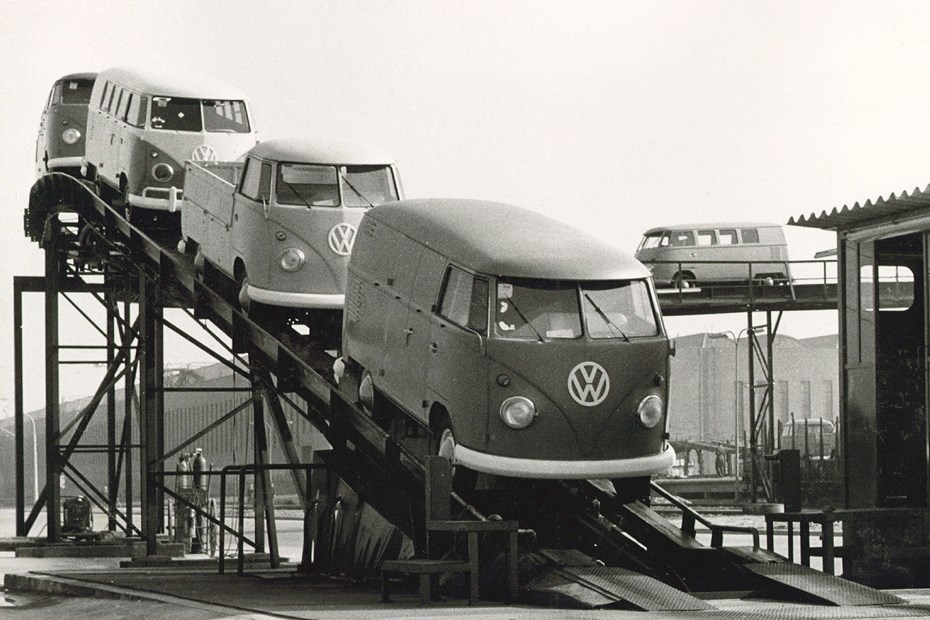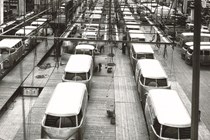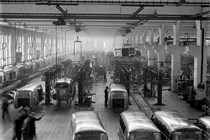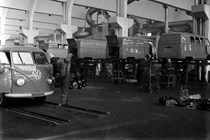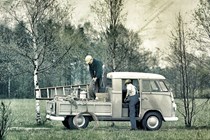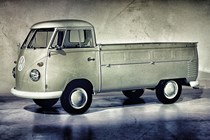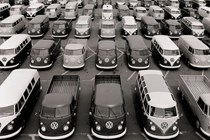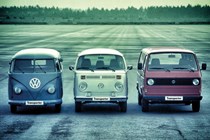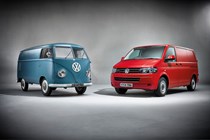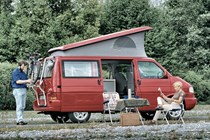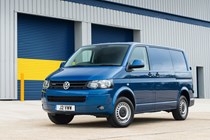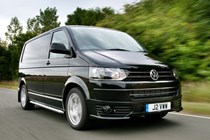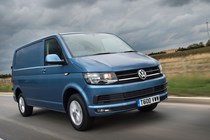The Volkswagen Transporter celebrates its 70th birthday in 2020, so we’ve taken a look back through the archive to chart the history of this massively popular van, with its iconic campervan credentials.
As the VW Transporter has been in constant production for those 70 years, it also the longest production run of any commercial vehicle. Quite a feat.
To mark the occasion, Volkswagen has released a selection of archive pictures, and you’ll find loads more in the gallery above. So let’s take a trip down memory lane.
VW Transporter facts
There have been six generations of Volkswagen Transporter, following the start of production on 8 March 1950.
In the 70 years since then, more than 13 million examples have been built.
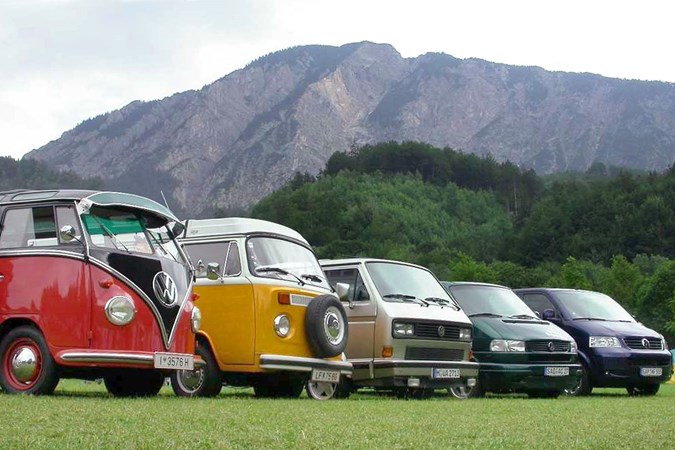
Other familiar names for the Transporter include the Type 2 (the Beetle was the Type 1), Bulli, Kombi, Samba and Microbus – though it’s also famous for being the basis of a Camper, these days known as the California.
Also available as a panel van, people carrier, minibus and chassis cab, it also forms the basis of the Caravelle (known as the Multivan in Germany) and the Transporter Shuttle.
The T numbers – T1, T2, T3, T4, T5 and T6 – though well known today were only applied retrospectively when the T4 model was first introduced in 1990.
Volkswagen Transporter development
The idea for the first Volkswagen Transporter came from a Dutch importer named Pon Bon, who spotted a parts mover when visiting the Beetle factory in 1946 and thought the idea could be adapted to become a production commercial vehicle. His first serious sketches emerged in 1947.
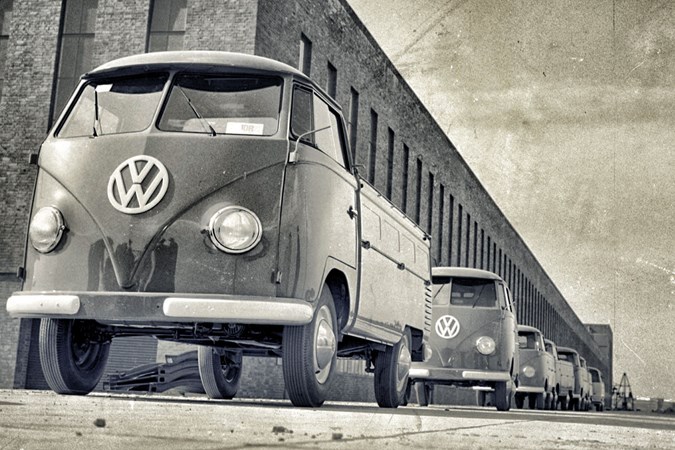
Innovative concepts included placing the driver right at the front of the vehicle (a design feature that’s come to be known as ‘forward control’), while the engine was placed right at the rear – as with the VW Beetle car that donated it – driving the rear wheels. The shape was also developed using a wind tunnel, in order to reduce fuel consumption and make it cheaper to run.
The first hand-built prototype (the Type 29) was produced in just three months, using a ladder frame chassis in place of the Beetle floor pan that was initially proposed (this proved too weak to accommodate a decent payload).
Full production was approved in 1949, with production of the first generation (T1) officially starting in March 1950.
Volkswagen Transporter T1: 1950-1967
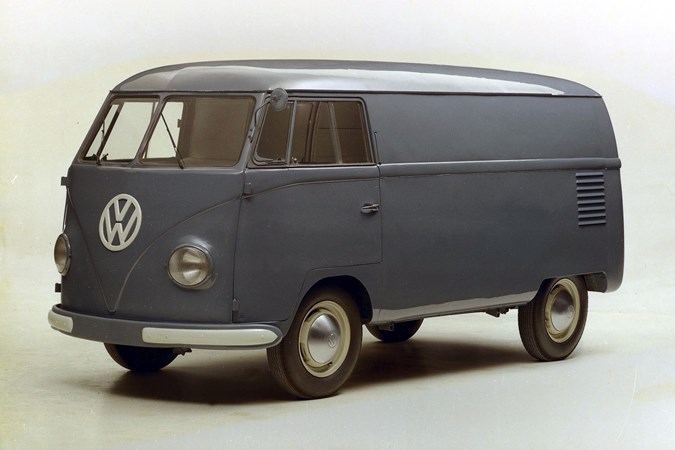
While it used the engine and gearbox from the VW Beetle, the Transporter boasted an impressive 750kg payload when it launched in 1950 as a panel van, passenger van (kombi) and eight-seater bus.
In 1951 VW added the multi-window Samba, which has become something of an icon, while 1952 saw a pickup join the range. With its distinctive two-piece windscreen design, the T1 has come to be called the ‘splittie’ by fans the world over.
Its success may have taken VW by surprise – it took just four years to sell 100,000 examples, and production was shifted from Wolfsburg to a purpose-built factory in Hanover in 1956. This also quickly reached capacity, so further production lines were added in Brazil (1956), Kassel, Germany (1957), Australia (1959), Mexico (1964) and Emden, Germany (1964).
By 1964 a million Transporters had been built, and VW reputedly had the largest private sea fleet in the world, with over 80 ships transporting its vehicles globally.
By the end of T1 production in 1967 1.9 million had been built, and it had become something of a cultural icon in the flower-power movement – leading to it also being known as the hippie bus.
Volkswagen Transporter T2: 1967-1979
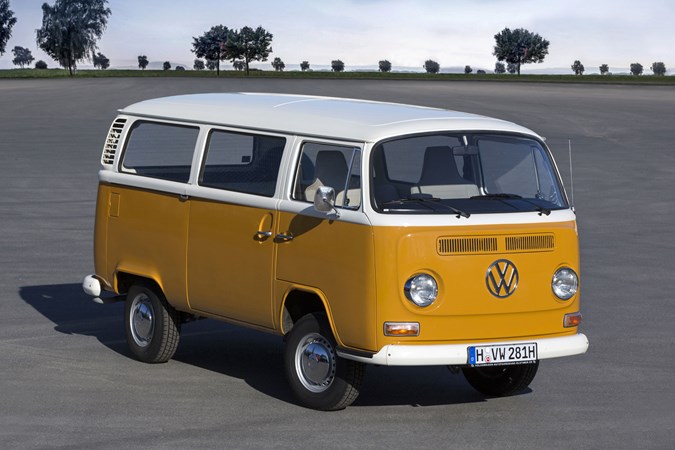
The T2 was a significant redevelopment of the T1 – with the same wheelbase but a longer body and payload increased to 900kg. The redesigned front dropped the split windscreen to improve visibility, while a more powerful engine and substantially revised suspension improved the driving experience.
A sliding side door became standard equipment to improve load-space access, while the T2 was also the first model to be sold as a pop-up roofed campervan, which became an instance success. You could even buy an all-electric version in 1972 – though we can’t imagine it had much of a driving range.
By 1971, the Transporter hit the three million mark, with 2.14m built at Hanover alone. Extra factories where added in Brazil, Argentina and Yugoslavia – and in fact the Sao Paulo plant in Brazil continued to build the T2 right up until 2013, when safety regulations finally killed it off.
As such, the T2 holds the record for longest continuous production of a particular type of vehicle (rather than a nameplate).
Volkswagen Transporter T3: 1979-1992
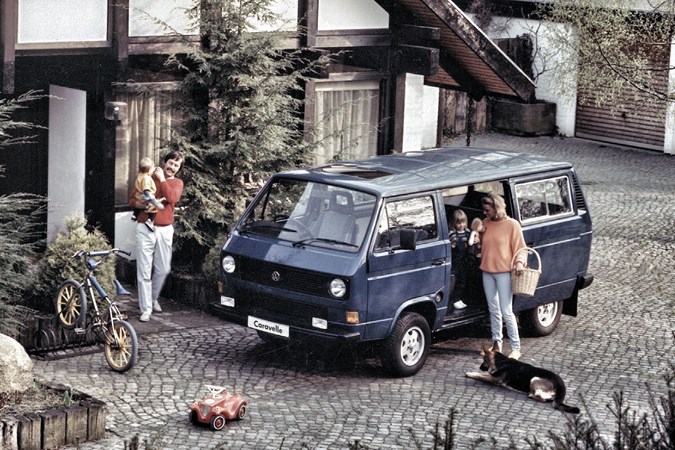
A complete transformation for the third-generation Transporter, with the T3 becoming wider, longer and more spacious – though it retained the rear-engine, rear-wheel drive layout of its predecessors.
Unfortunately, it also soldiered on with their air-cooled engines initially, despite weighing more and being upgraded to a 995kg payload limit. This made it rather slow – both to drive and to sell, especially as it was now facing stiffer competition, from the likes of the Ford Transit, Renault Trafic and Mercedes-Benz MB100.
Things improved dramatically for the T3 when new water-cooled engines were introduced, making the most of its more car-like handling. Diesel engines were also added for this model. In 1985 things got even more exciting with the introduction of innovations such as catalytic converters, turbochargers and all-wheel drive.
The T3 is also the model that saw the Caravelle and California become popular. The Hanover plant built 1.3 million T3s overall, and by 1985 the Transporter was sold in 180 different markets. In 1986 total sales rolled over six million.
Volkswagen Transporter T4: 1990-2003
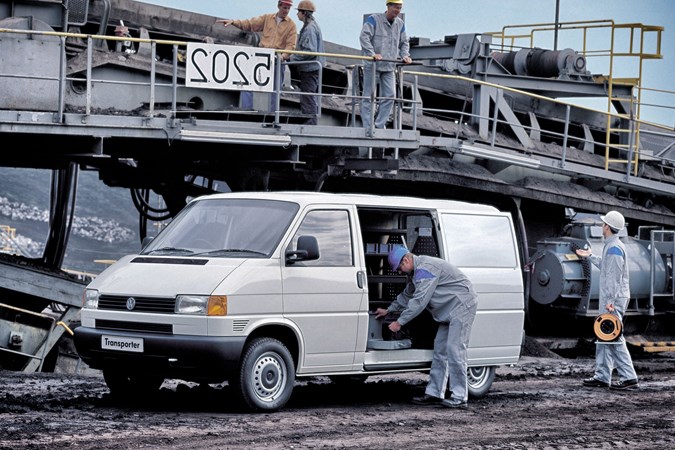
Overlapping with the T3 by a couple of years, the T4 brought even bigger revolution to VW’s medium van – this was the first model produced with the now conventional front-engine, front-wheel drive drivetrain layout.
This allowed for even better driving characteristics, more varied (and powerful) engine choice, and a larger, more practical load space. The T4 was also the first Transporter to be offered in a choice of two wheelbases. You could also get a tailgate as well as barn doors at the rear, and two sliding side doors.
A vast range of model variants were offered, too, including the panel van, kombi, double cab, pickup, and chassis with single and double cab options. Not to mention the Caravelle, Multivan and California.
It received a facelift in 1996, and by end of production in 2003, 1.9 million examples had been produced, having set the formula for the Transporter as current buyers would know it.
Volkswagen Transporter T5: 2003-2015
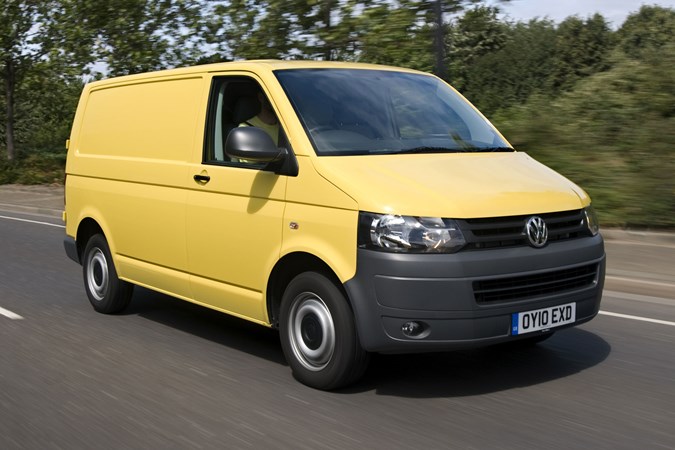
Described by Volkswagen as ‘an evolution of exterior design with greater focus placed on the interior and the driver’s workplace’, the T5 delivered a choice of petrol and diesel engines, front-wheel drive and all-wheel drive, and is similar to the current T6 under the skin.
It offered a choice of two load lengths and three roof heights, and over 100 different variants in total. Making it one of the most versatile vans around in a sector of the market that was becoming increasingly competitive as other brands joined forces to produce their alternatives.
The T5 was also the first model that saw the California camper produced in-house at Hanover – making it a fully factory-built campervan for the first time, a USP it maintains to this day, even if you can now buy rival models direct from their respective dealers.
Over 1.65 million T5s were built during its 12-year production run.
Volkswagen Transporter T6/T6.1: 2015 onwards
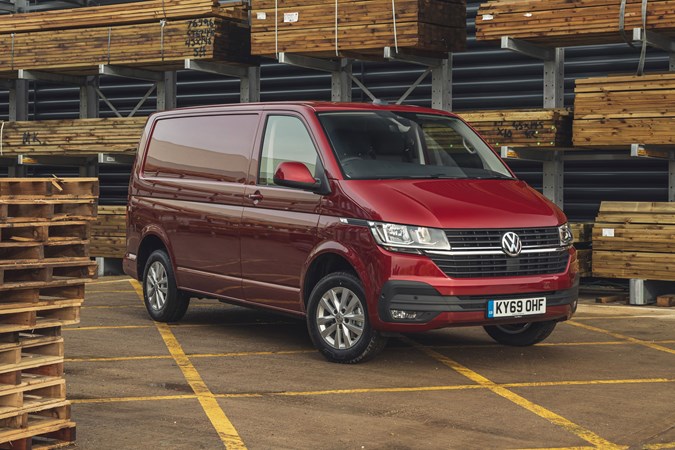
A very significant upgrade over the T5, the T6 maintained the choice of two wheelbases and three roof heights (though the UK dropped back to two in 2018), while introducing more efficient engines, and upping its safety game with modern driver assistance aids.
This included autonomous emergency braking, which was made standard in the UK in mid-2017.
There were even greater changes in 2019, when the T6.1 facelift was introduced ahead of going on sale in early 2020. Updates for this include revised interior, a new type of power steering (allowing for even more safety kit), increased connectivity and even further efficiency improvements.
It’s one of the best vans in the medium sector, with a range that stretches from basic working vehicles right though to immensely fancy lifestyle machinery – not least of which being the latest California and Caravelle. You can even buy a two-tone model, paying tribute to the original.
The Volkswagen Transporter of the future
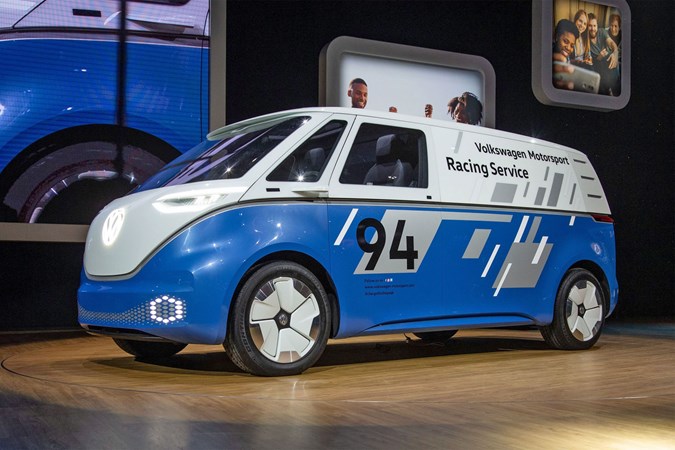
The next Transporter will be somewhat different, as it will based on the same platform as the next Ford Transit Custom, following a strategic alliance between these two giants of the light commercial vehicle world. We’re not expecting to see this new van until 2022 at the earliest.
At the same time, Volkswagen is busy building a new T7 family that will apparently concentrate on people carrying duties rather than commercial ones, and will soon begin preparing its Hanover factory for production of the ID Buzz, a medium-sized electric van that will sit alongside the next generation of Transporter (pictured above).
So the story is far from over yet.
Also read:
>> History of the Volkswagen Caddy
>> Volkswagen Transporter T6 and T6.1 review
>> VW e-Bulli – a classic VW Transporter converted to electric power
>> Find a Volkswagen Transporter for sale via Parkers
>> For more of the Transporter’s cultural impact, see our sister site CAR magazine
Just so you know, we may receive a commission or other compensation from the links on this website - read why you should trust us.


